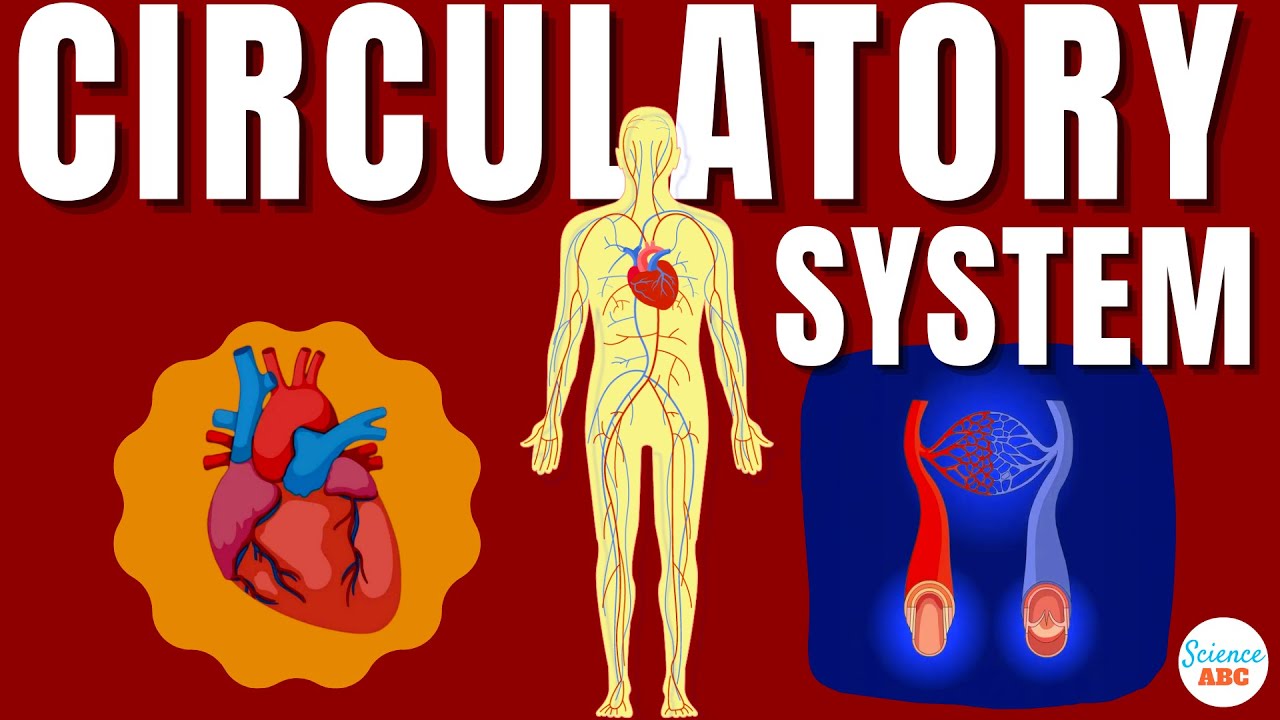Blood Vessels, Part 1 - Form and Function: Crash Course Anatomy & Physiology #27
Summary
TLDRThis script offers a comprehensive look at the circulatory system, emphasizing the heart's role and the dynamic nature of blood vessels. It explains the function of arteries, veins, capillaries, and the tunica layers, highlighting how they work together to maintain blood pressure and facilitate nutrient and waste exchange. The script also explores thermoregulation, the systemic circulatory loop, and the importance of blood vessel structure in relation to function.
Takeaways
- 💓 The heart is a self-electrifying organ that maintains blood pressure and circulation.
- 🔁 The circulatory system includes not just the heart but also a network of blood vessels that actively contract and expand.
- 🚦 Blood vessels are categorized into arteries, veins, capillaries, arterioles, and venules, each with specific roles in blood circulation.
- 🌐 If laid end-to-end, all human blood vessels would stretch approximately 100,000 kilometers, which is over two and a half times around the Earth.
- 🩸 Blood vessels are composed of three layers: the tunica intima, tunica media, and tunica externa, each serving different functions.
- 🛡 The tunica intima is the innermost layer with endothelium that reduces friction for blood flow.
- 💪 The tunica media contains smooth muscle and elastin, allowing for vasoconstriction and vasodilation, which regulate blood pressure.
- 🧥 The tunica externa is the outermost layer that protects and reinforces the blood vessel, similar to an overcoat.
- 🔄 Blood flow from the heart to the body and back involves a complex journey through various types of blood vessels, including the aorta and its branches.
- 🌡 Capillary beds help in thermoregulation by adjusting blood flow to the skin in response to temperature changes.
- ⏱ The circulatory system moves about 7,500 liters of blood through the heart every day, completing the circuit in approximately one minute.
Q & A
What is the primary function of the heart in the circulatory system?
-The heart's primary function is to pump blood throughout the body, maintaining blood flow and pressure.
How do blood vessels contribute to the circulatory system?
-Blood vessels actively contract and expand to deliver oxygen and nutrients to cells, carry away waste products, and help maintain blood pressure.
What are the three major types of blood vessels?
-The three major types of blood vessels are arteries, which carry blood away from the heart; veins, which bring it back; and capillaries, which act as the transfer station between the two.
What is the role of arterioles and venules in the circulatory system?
-Arterioles are small arteries that branch out into capillaries, while venules are the smallest components of veins that collect blood from capillaries and merge into larger veins.
If all human blood vessels were laid end-to-end, how long would they be?
-If all human blood vessels were laid end-to-end, they would stretch out for approximately 100,000 kilometers.
What is the tunica intima and why is it significant?
-The tunica intima is the innermost layer of blood vessels, containing the endothelium which forms a slick surface to reduce friction as blood flows through.
How does the tunica media affect blood flow and blood pressure?
-The tunica media, composed of smooth muscle and elastin, can contract (vasoconstriction) or relax (vasodilation) to regulate blood flow and pressure.
What is the function of the tunica externa in blood vessels?
-The tunica externa is the outermost layer of blood vessels, providing protection and reinforcement to the vessel.
How do veins differ structurally from arteries to accommodate their function?
-Veins have thinner walls and less elasticity compared to arteries, and some veins, especially those in the arms and legs, have valves to prevent backflow.
What is the process of blood moving from the heart to the muscles of the thumb and back?
-Blood leaves the heart through the aorta, travels through arteries and arterioles, exchanges materials in capillaries, then collects in venules and veins before returning to the heart.
How does the circulatory system respond to cold temperatures?
-In cold temperatures, blood vessels constrict to reduce heat loss, and capillary sphincters tighten to bypass some capillaries, reducing blood flow to the skin.
What is the significance of the circulatory system moving approximately 7,500 liters of blood through the heart each day?
-The high volume of blood circulation ensures that oxygen and nutrients are delivered to cells and waste products are removed, maintaining overall body function.
Outlines

This section is available to paid users only. Please upgrade to access this part.
Upgrade NowMindmap

This section is available to paid users only. Please upgrade to access this part.
Upgrade NowKeywords

This section is available to paid users only. Please upgrade to access this part.
Upgrade NowHighlights

This section is available to paid users only. Please upgrade to access this part.
Upgrade NowTranscripts

This section is available to paid users only. Please upgrade to access this part.
Upgrade NowBrowse More Related Video

Q1W1 | Respiratory & Circulatory System

BIOLOGI Kelas 11 - Sistem Peredaran Darah (PART 2) | GIA Academy

BAB II |Struktur dan Fungsi Tubuh Makhluk Hidup|SISTEM PEREDARAN DARAH | KELAS 8| KURIKULUM MERDEKA

Struktur dan Fungsi Jantung dan Pembuluh Darah Pada Sistem Peredaran Darah Manusia

Circulatory System And The Heart | Explained In Simple Words

Circulatory System I Animated I Grade 9 - Q1 l PART 2
5.0 / 5 (0 votes)